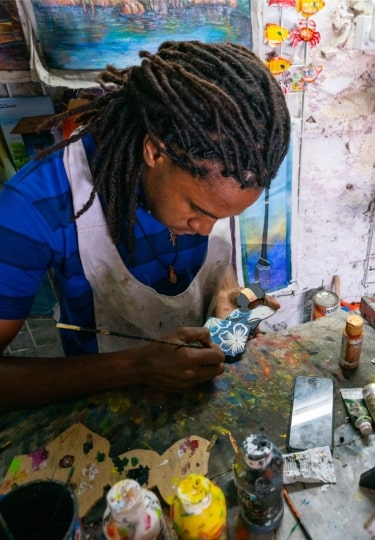St. Lucia is a “Goldilocks” island: big enough to offer plenty of variety but small enough to explore easily. The same thing is true of its interesting capital, Castries.
This charming Caribbean city is a walkable place of colorful buildings and wide streets. Ground floors are set back to shade sidewalks where pedestrians amble in the Caribbean heat.
Castries sits to the north of St. Lucia, from where anywhere on the island is within easy reach, whether you’re interested in beautiful beaches, the dramatic Pitons, or lush rainforest.
Why Visit Castries
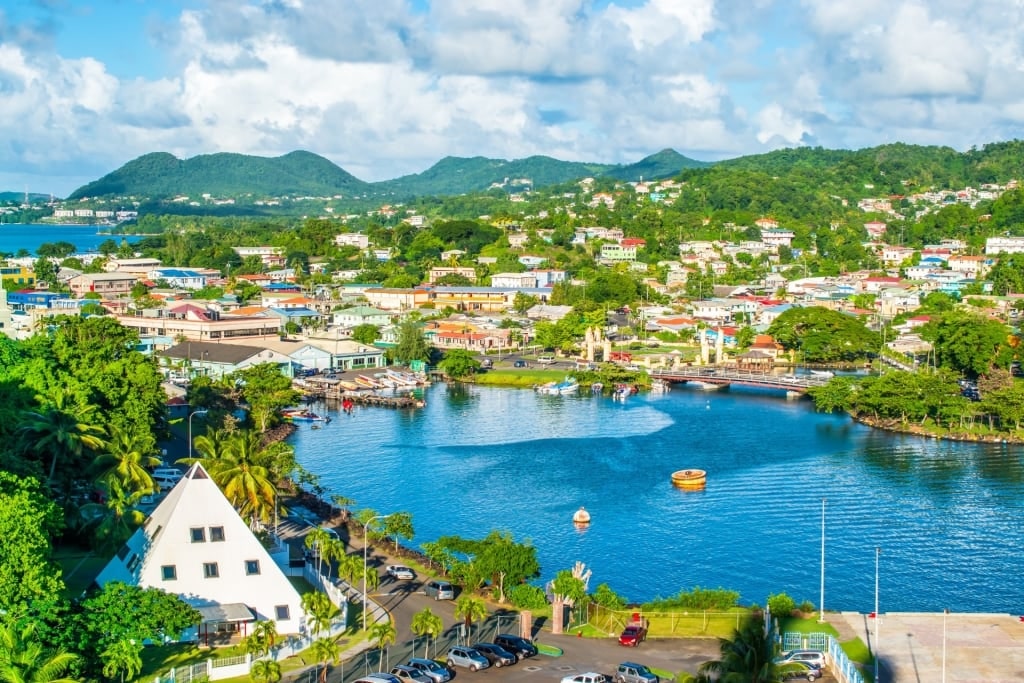
Castries
Like many port cities, Castries, St. Lucia is a place many visitors rush through on their way to more notable attractions. And St. Lucia, as one of the prettiest Caribbean islands, certainly has plenty of those, from its glorious beaches to its hot springs and tropical forests.
However, it’s well worth relaxing into the Caribbean pace of life and taking some time out to enjoy this quiet capital. The downtown area is compact and offers plenty of interesting sights.
Visitors will find a modern city of 20,000 people, with a friendly, small-town feel. Its grid system makes it easy to find your way around to enjoy the relaxed Caribbean vibe.
Exploring with a guide is a good way to learn more about the French and British history of the beautiful island. The local architecture, cuisine, and language all show influences from these two colonial powers.
History & Culture
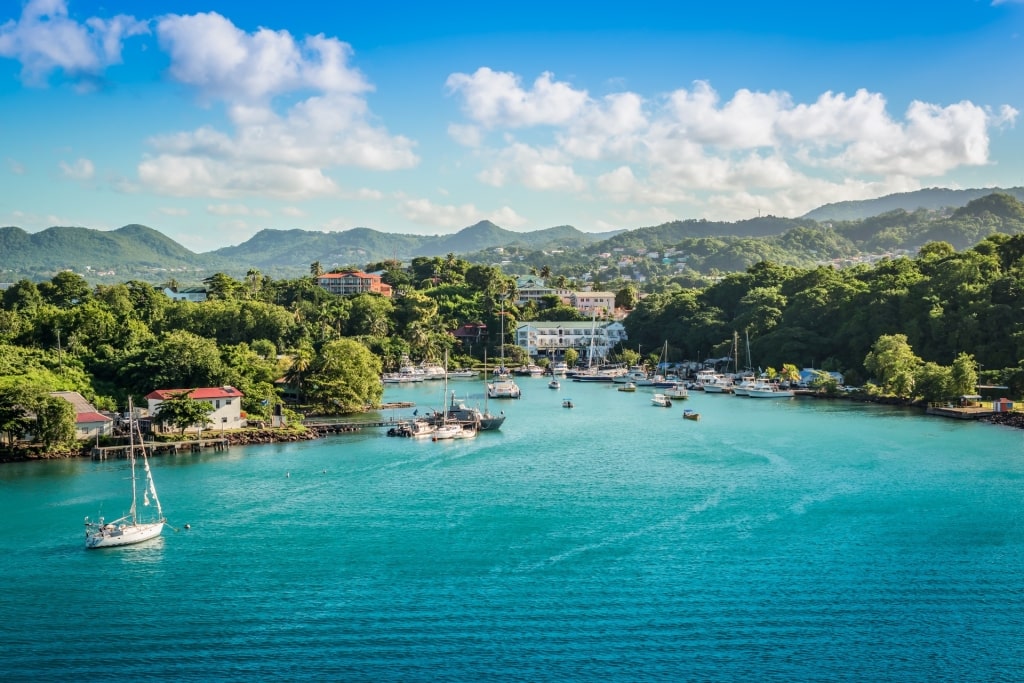
Castries
The sheltered harbor of Castries made it a natural home for Arawak, and later, Carib people, before the French arrived in 1650. During the colonial era, St. Lucia changed between French and British control many times.
After the fall of Napoleon in 1814, this Eastern Caribbean island finally fell to Britain. They developed Castries Harbour to support the coal trade during the age of steamships.
Castries became the capital of independent St. Lucia in 1979 and it has since seen significant growth and modernization. While tourism is now the major employer, the town also has growing tech, food processing, and finance sectors.
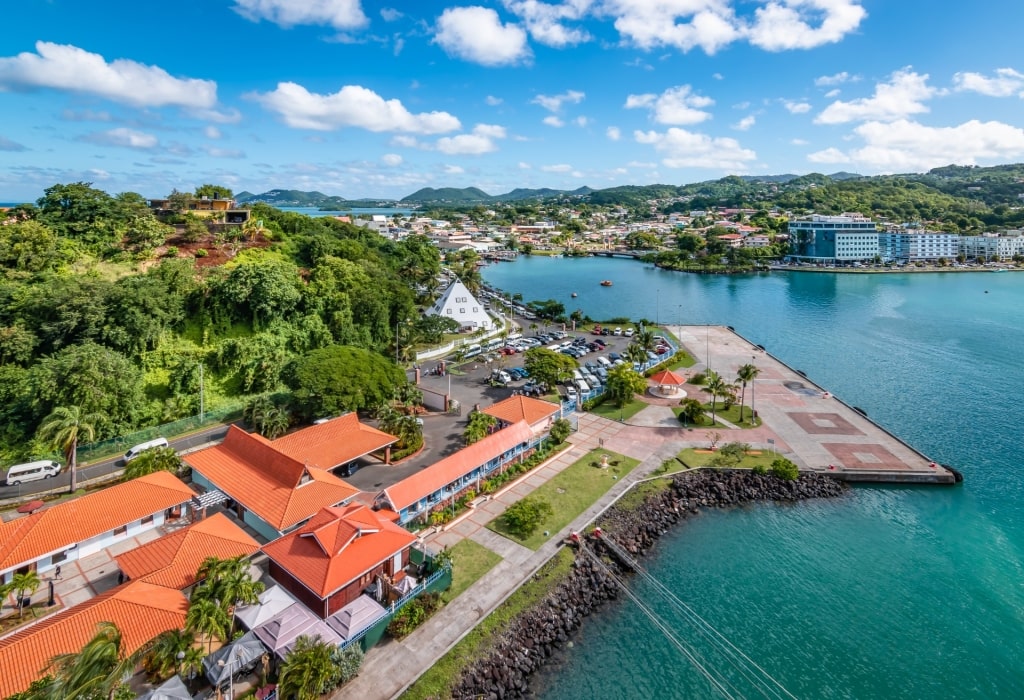
Castries
British rule has left a dominant legacy, which includes the English language. However, you will also hear people speaking in the Creole dialect that is a reminder of French rule and African heritage.
Creole culture is celebrated in an annual Creole Day, which features food, culture, music, and dance. You can explore this fascinating side of St. Lucian life in many shops, galleries, and restaurants.
Wildlife & Nature
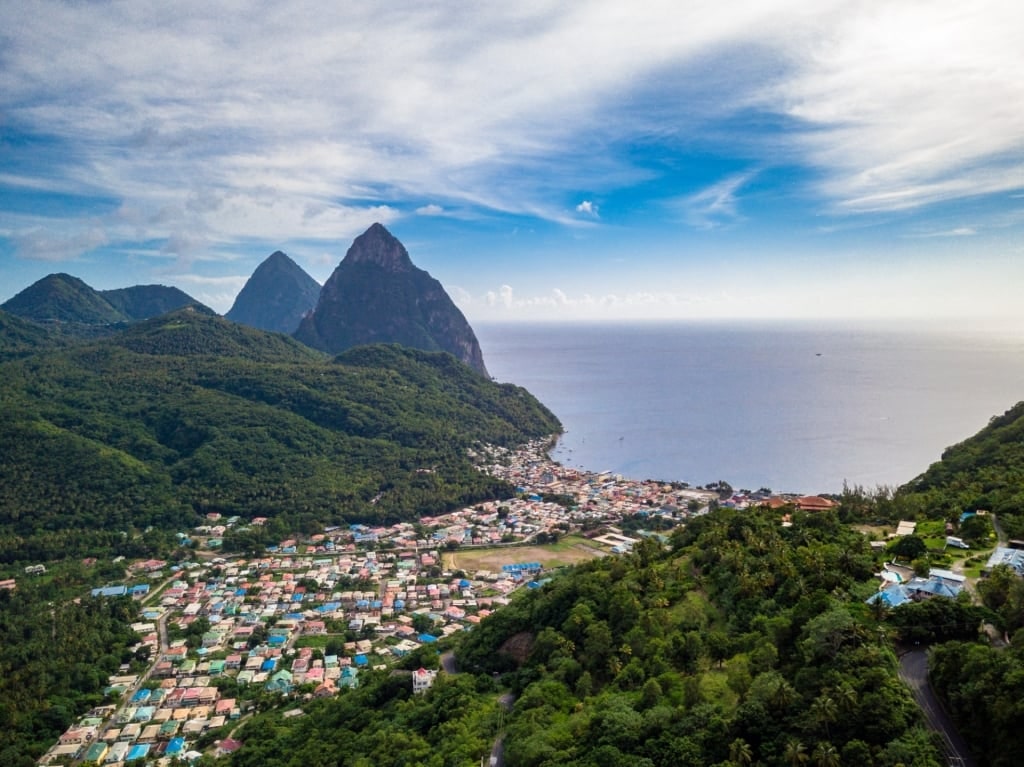
St. Lucia
Castries is a great base for visiting the lush interior of St. Lucia. You can join off-road or ATV tours, many of which explore areas near the Pitons.
The Pitons are two peaks near Soufrière, in a beautiful setting protected as a UNESCO World Heritage Site. Petit Piton is 2,438 feet, while Gros Piton reaches 2,618 feet in height.
While you can climb Gros Piton, it’s a tough Caribbean hike through humid tropical forest. A more popular choice is the 0.6-mile Tet Paul Nature Trail.
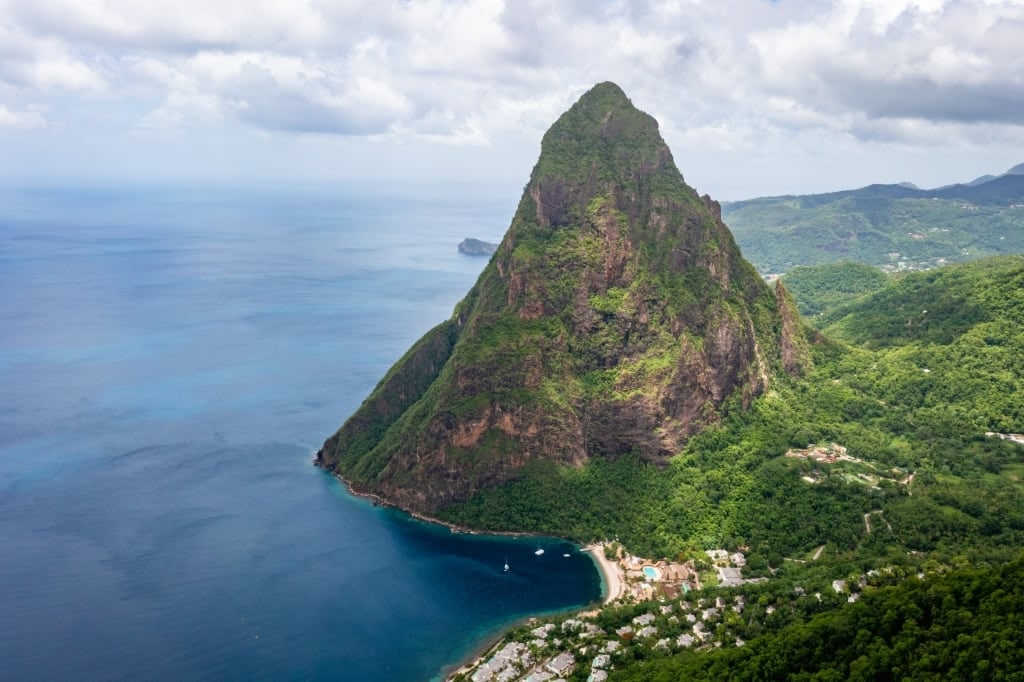
Pitons
This guided walk visits several viewpoints that take in both Pitons. You will need sturdy walking shoes and walking sticks are available at the start.
The most common Caribbean wildlife you will see are birds. St. Lucia has some 170 bird species, six of which are only found here, including the colorful St. Lucian parrot.
Tips for Visiting Castries
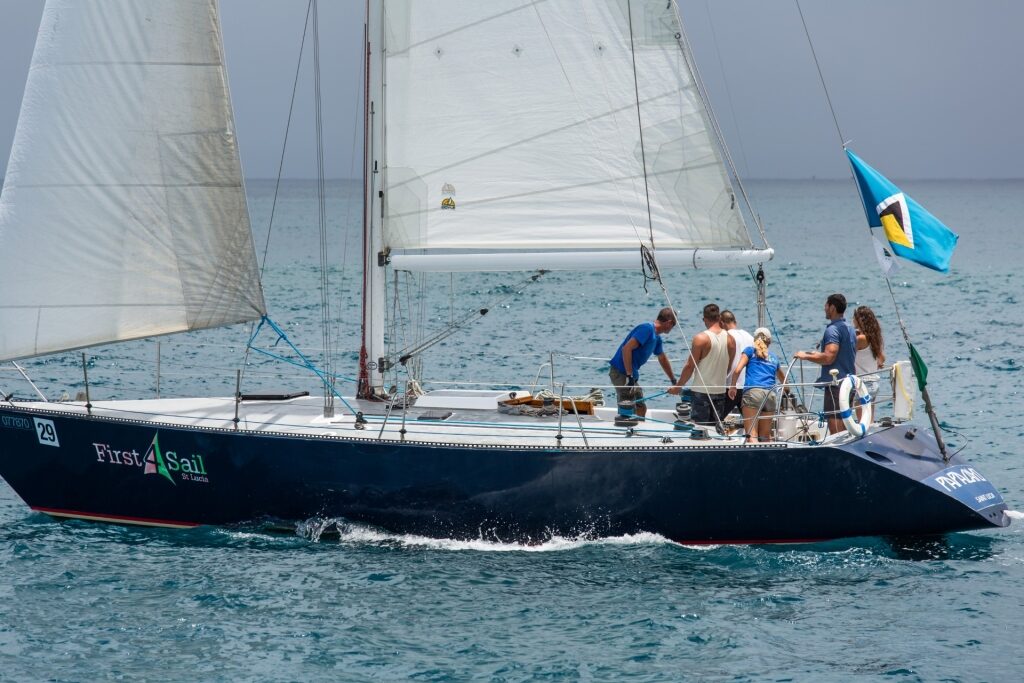
Sailing in St. Lucia
For a literal taste of St. Lucia, start at the Central Market. A photographer’s dream, it’s full of fresh produce and friendly faces.
From there, walk south to the massive Castries Cathedral, with Derek Walcott Square beside it. The square is dedicated to the Nobel prize-winning poet and is a great spot for people watching.
The roads of St. Lucia are part of the island experience. If you rent a car, be prepared for long drives on busy, winding roads.
St. Lucia is also one of the best places to go sailing in the Caribbean and a boat ride is often a quicker way to reach some parts of the island. Embrace the experience by taking a sightseeing catamaran tour that will also take you snorkeling.
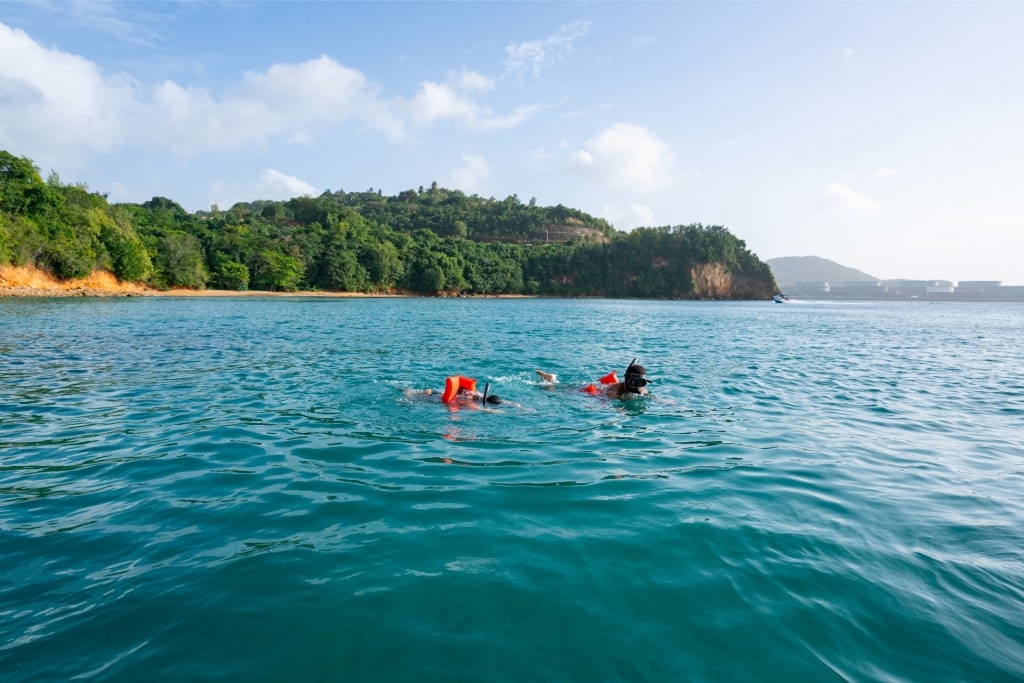
Snorkeling in St. Lucia
As well as sunscreen and sunhat, don’t forget your bug spray. A waterproof bag will not only protect valuables on boat trips or the beach but also during rain showers.
St. Lucia uses the East Caribbean dollar, but many shops or restaurants will accept U.S. dollars. A 10 percent service charge is usually included on your bill in restaurants.
Things to Do & Attractions in Castries
Admire Government House
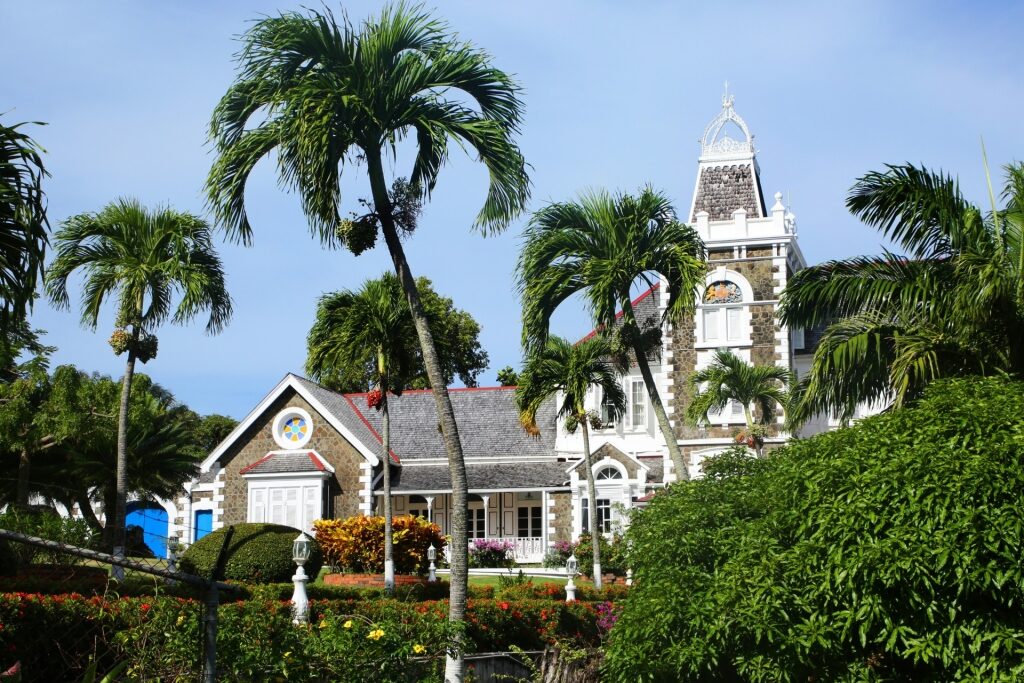
Government House
St. Lucia’s Government House is the official residence of the Governor General. He—or she—is the representative of the British monarch.
The current building was built in 1895 and is a lovely example of Victorian-style Caribbean architecture. It stands among beautiful landscaped tropical gardens.
The hill it stands on is called Morne Fortune, or “Hill of Good Luck. From here, you can enjoy panoramic views of Castries Harbour and the Caribbean.
See the Batik at Howelton House
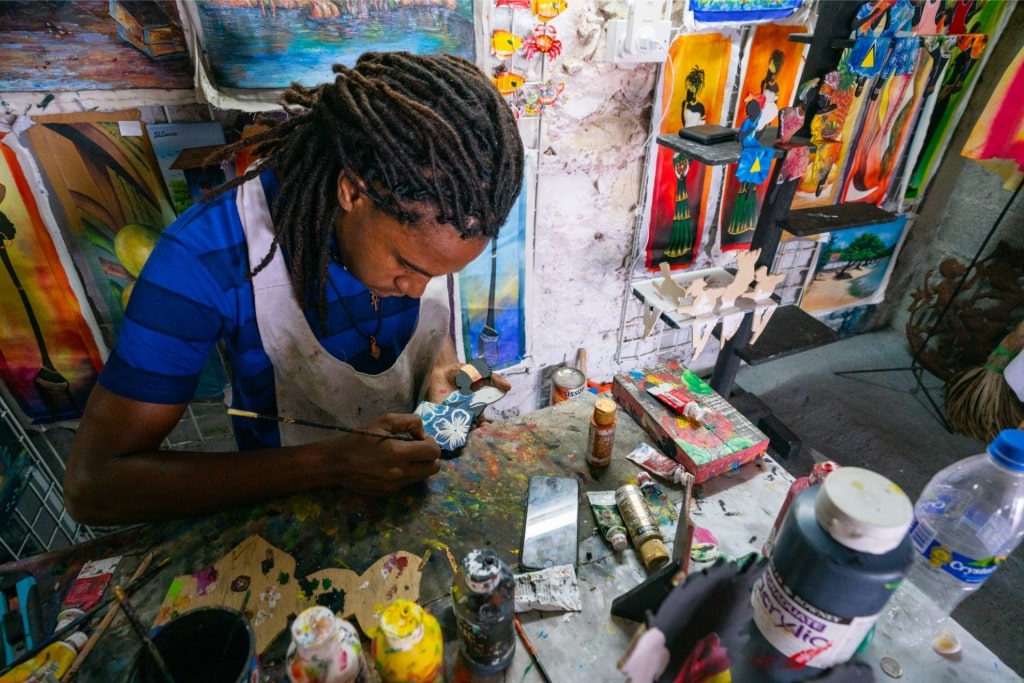
Batik art
Overlooking Castries, Howelton House dates back to around 1896 when it was built as a luxurious family residence. Its pretty blend of Victorian and Caribbean styles makes it an architectural gem.
However, the house is now better known for its Batik Center which produces beautiful works of art. It uses traditional Indonesian batik techniques, with eco-friendly dyes on fine sea island cotton.
You can watch the artisans at work and buy a wide range of handmade clothing and artwork. You can even join a workshop to make your own batik.
Visit Pigeon Island
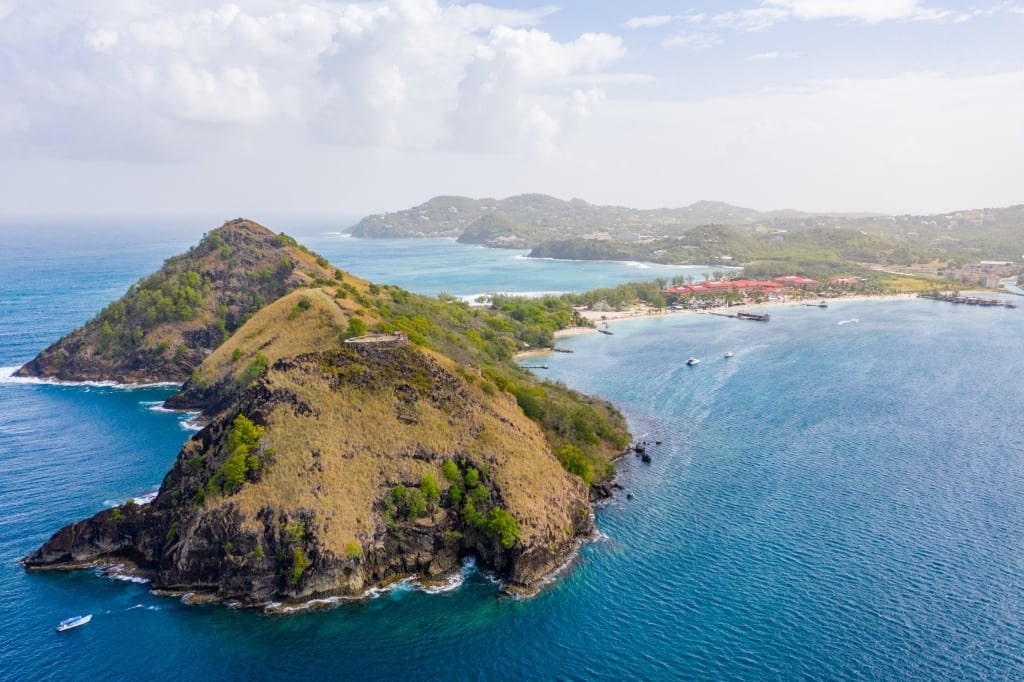
Pigeon Island
Pigeon Island, north of Castries, has played a significant part in St. Lucia’s history. Both the French and the British used it as a fort and lookout point during their battles for control of the island.
Now joined to the mainland by a causeway, visiting Pigeon Island is one of the best things to do in St. Lucia thanks to its two beaches and hiking trails. You can still see the ruins of Fort Rodney, built by the British in the 18th century.
On a walk, enjoy views over Rodney Bay or look out for the many bird species. A small museum will tell you more about the island’s history and ecology.
Eat at Castries Central Market
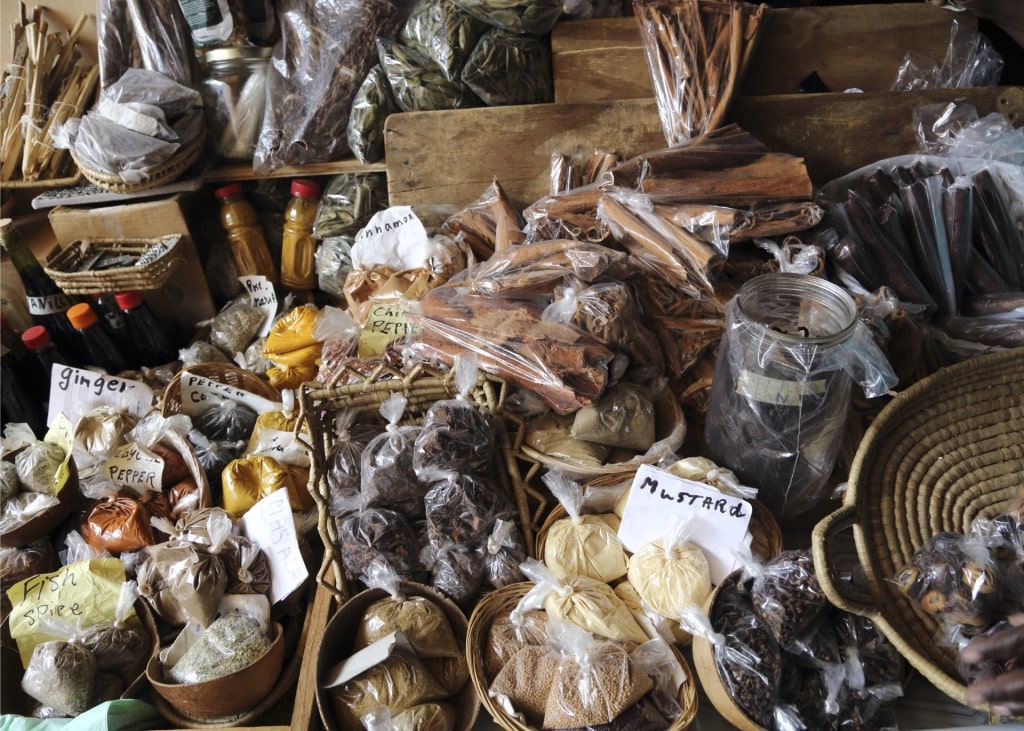
Castries Central Market
This vast market is a colorful slice of St. Lucian life. Busiest at weekends, particularly Saturday, it’s a less hectic, but still atmospheric experience during the week.
Originally for fresh produce, you can still find it packed with vendors of fruit and vegetables. It’s also a good place to discover the whole range of St. Lucia’s fish and other Caribbean seafood.
You’ll now also find plenty of stalls selling crafts, jewelry, clothing, and other souvenirs. Hot sauces, banana ketchup, and mixed spices are other popular offerings.
If you do nothing else here, you should taste the wonderful local fruit. St. Lucia boasts at least 24 different species of mango, as well as exotics such as soursop or passion fruit.
Photograph Derek Walcott Square
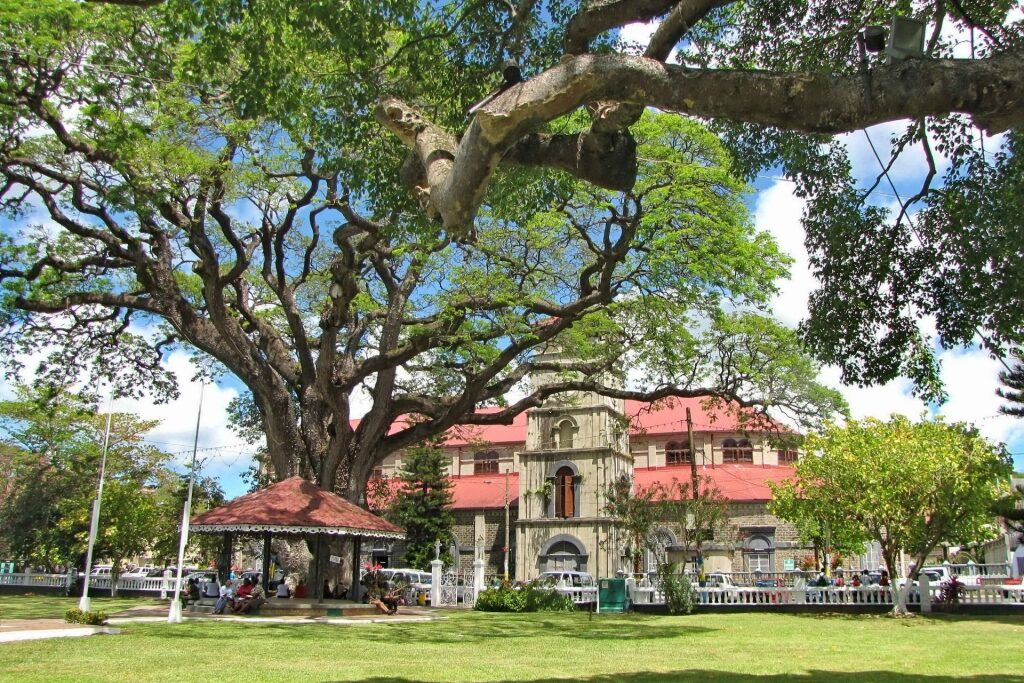
Derek Walcott Square
This square is named for St. Lucian poet, painter, and playwright, Derek Walcott. He won the 1992 Nobel Prize in Literature for his poetic work that strongly features the island.
You’ll find a gold-painted bust of Walcott standing in the square, alongside another of Sir Arthur Lewis. Lewis won the Nobel Prize in 1979 for his work in Economic Sciences.
Another feature of the square is a wide-spreading 400-year-old saman tree. A fountain adds its cooling sounds to the tree’s shade.
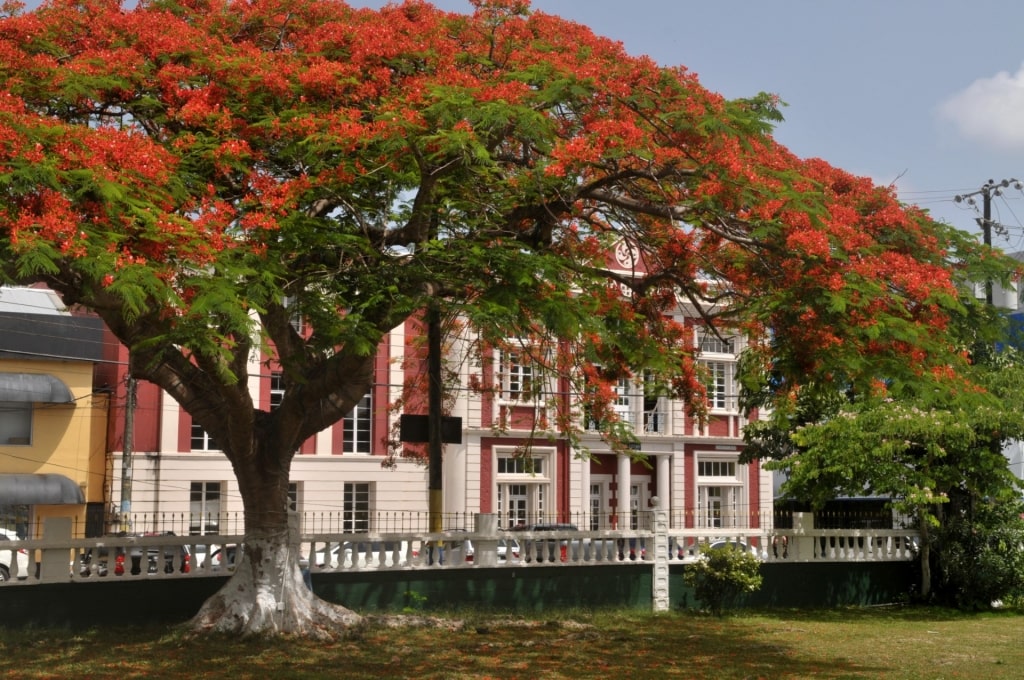
Derek Walcott Square
Around the square, you’ll find Castries Cathedral and the handsome, coral-red Carnegie Central Library. A number of other distinctive gingerbread buildings in bright colors make for a photogenic view.
See Inside Castries Cathedral
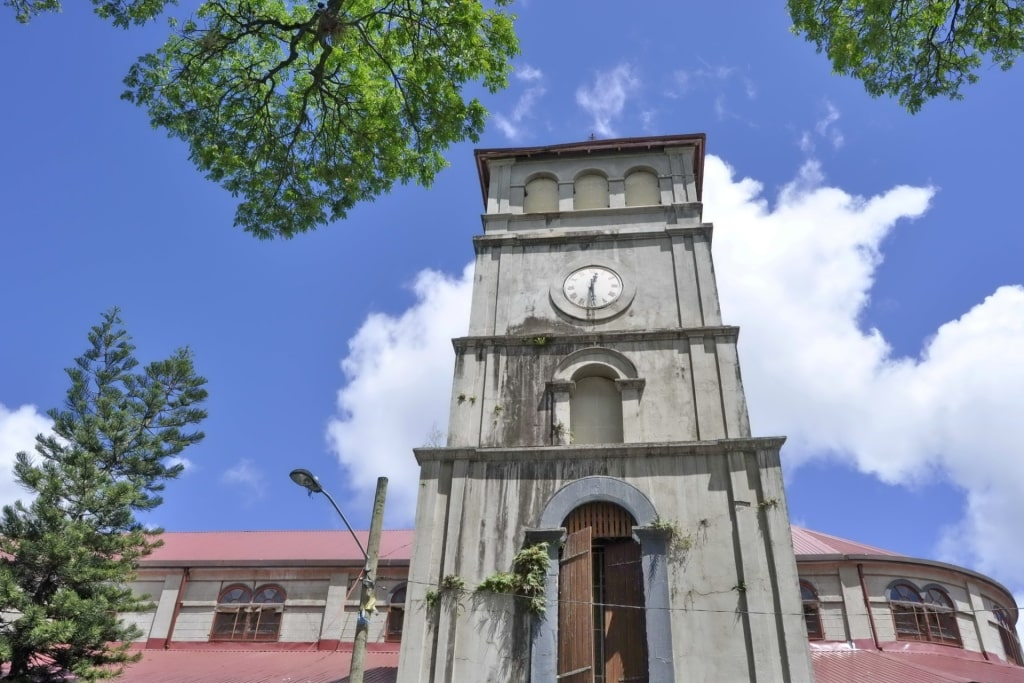
Castries Cathedral
Often called Castries Cathedral, the Basilica of the Immaculate Conception sits on Derek Walcott Square in the heart of Castries. It’s a major landmark in the town center, dating to 1897, and is the largest church in the Caribbean.
The architecture is a mix of French and Caribbean architectural styles. The slightly plain exterior hides a colorful, airy interior.
The colorful frescoes and murals inside bring a Caribbean flavor to familiar biblical scenes. Note the Stations of the Cross by local artist Sir Dunstan St. Omer, designer of St. Lucia’s flag.
Shop at Pointe Seraphine
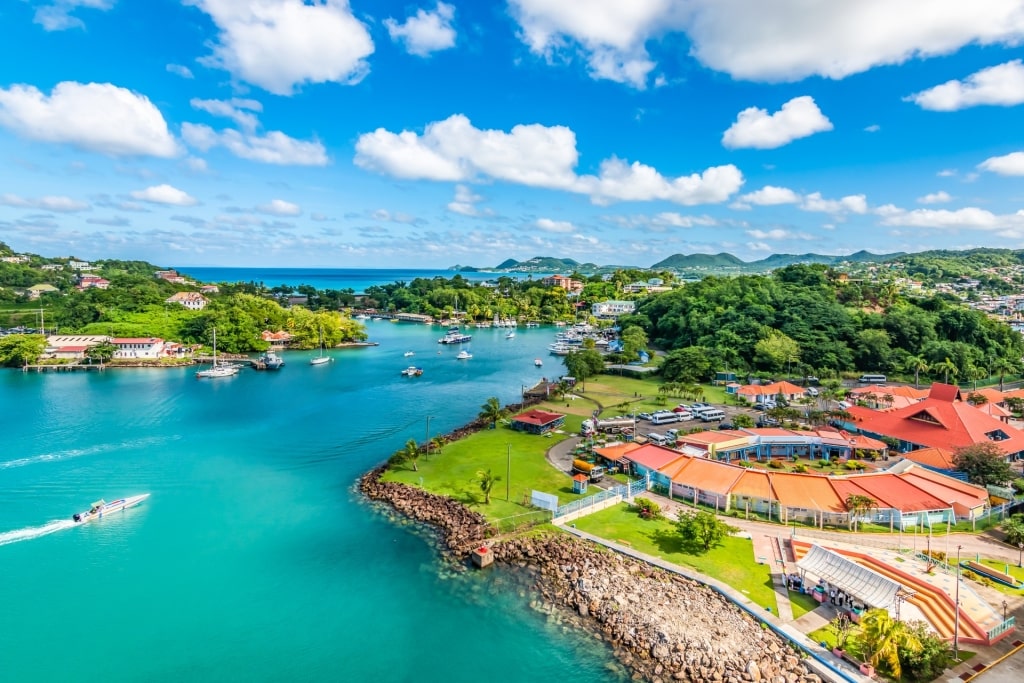
Pointe Seraphine
The Pointe Seraphine Shopping Complex sits on the north side of Castries Harbour, offering duty-free shopping to visitors. As well as jewelry and perfume, it’s a good place to pick up local crafts and souvenirs.
It’s also good for rum from St. Lucia and elsewhere in the Caribbean. The complex has a number of different shops in bright, tropical colors.
Pointe Seraphine is a common meeting point for island tours and excursions. Its restaurants, cafés, and bars make it a good place to hang out.
Relax on Reduit Beach
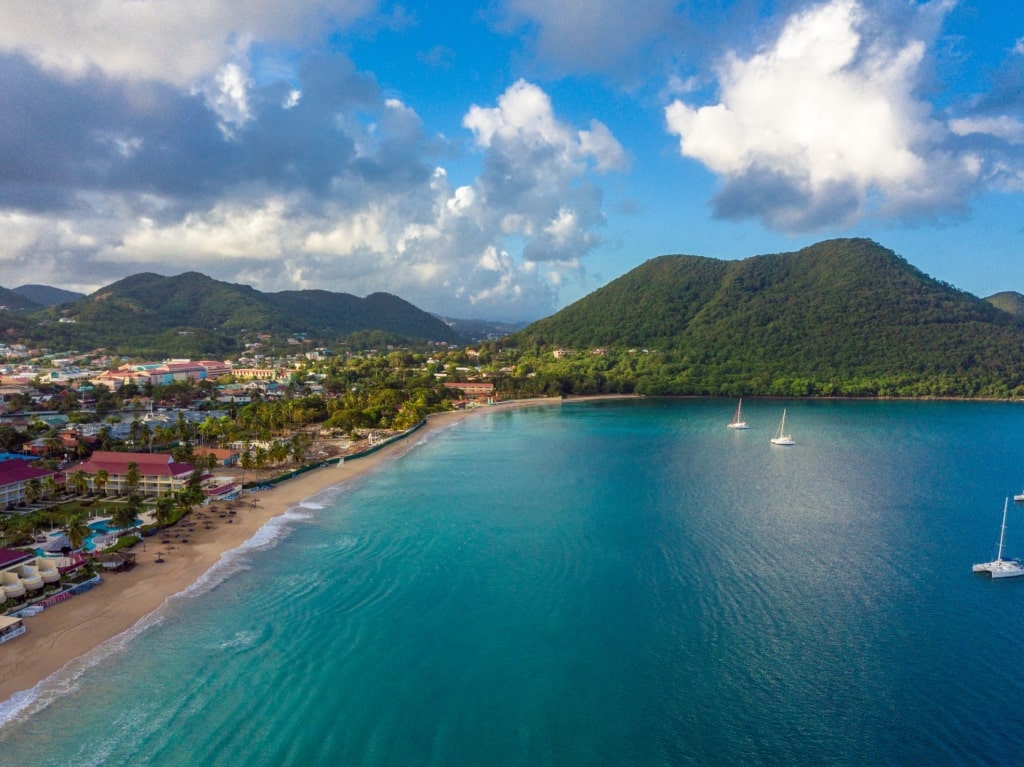
Reduit Beach
The island has many beautiful beaches, but Reduit is among the most popular beaches in St. Lucia for good reason. Sitting in Rodney Bay on the northwest coast, it’s less than 30 minutes from Castries.
The beach stretches for some 1.5 miles in length, with golden sand and clear blue water. Well-sheltered in a bay, there are plenty of fish shacks, bars, and other facilities.
There are also plenty of vendors, offering everything from coconut water to tasty homemade snacks. If you rent a sunbed, you’ll also find sellers of cold beers or soft drinks eager to serve you.
The beach shelves gently into the Caribbean, making entry into the calm water easy. Snorkelers, kayakers, and paddle boarders can find everything they need for rent.
Take a Dip at Diamond Falls
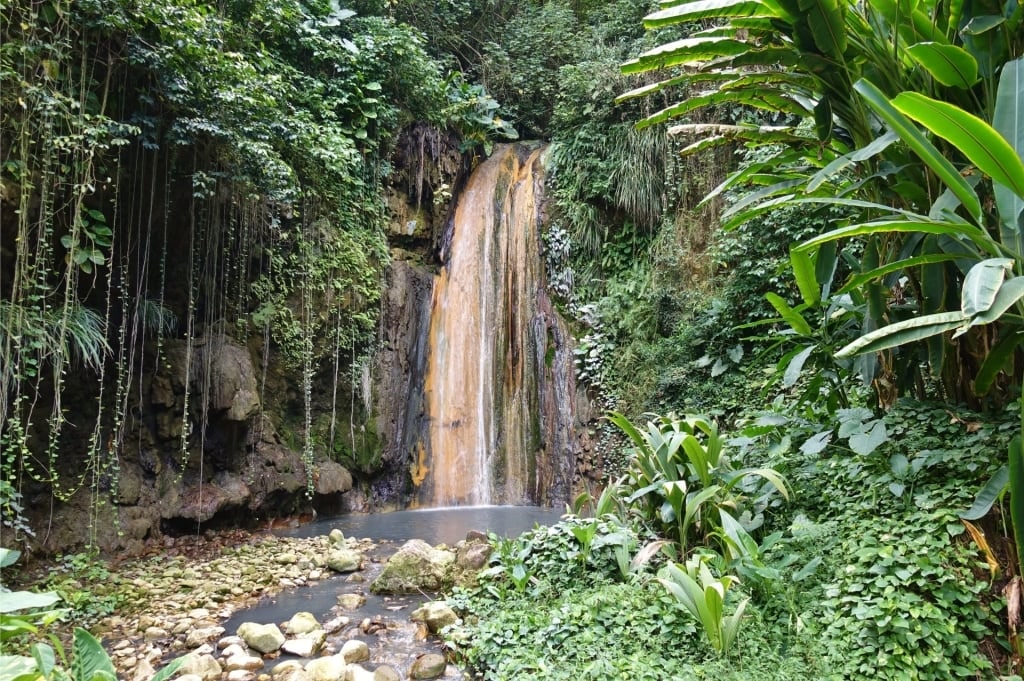
Diamond Falls
This private estate holds a botanical garden, relaxing mineral baths, and one of the most stunning waterfalls in the Caribbean. Just over an hour south of Castries, it’s a delightful tropical escape, rich with orchids and birdlife.
The estate is a former plantation, part of a larger one gifted by France’s King Louis XIV in 1713 to the Devaux family. The king also funded the first stone buildings serving the mineral baths.
The baths are fed by geothermal springs and their minerals are said to have therapeutic properties. If you plan on taking a dip, bring an old swimsuit as the sulfur smell can linger.
Food & Drink
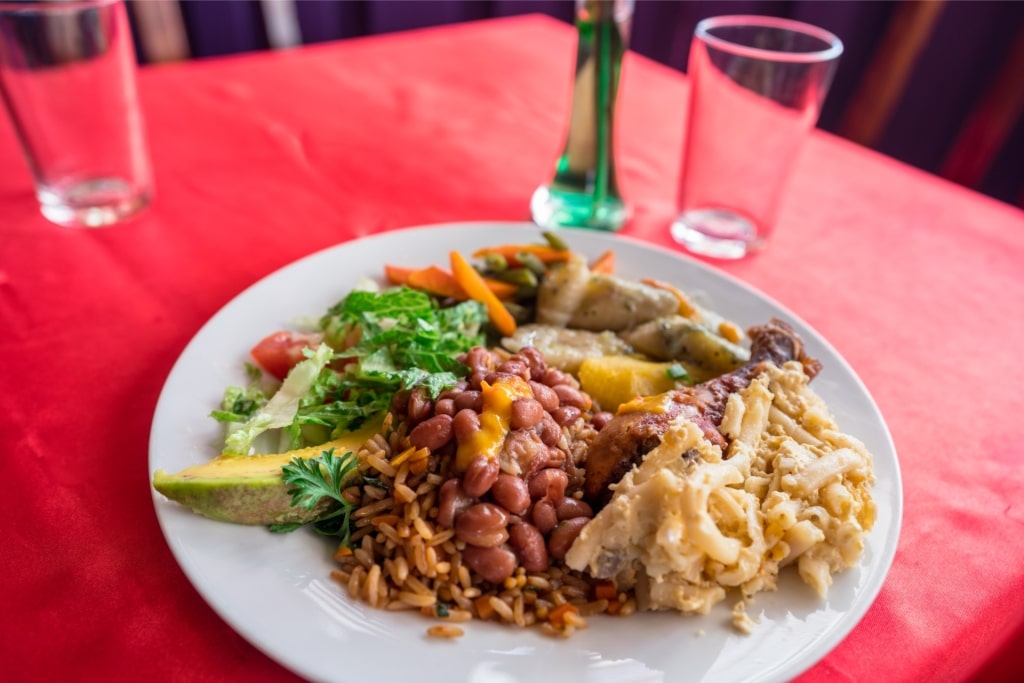
Food in St. Lucia
The history of Caribbean, African, French, Indian, and British cooking has left St. Lucia with a rich cuisine. You can see that in the national dish of green figs and saltfish, made with green bananas and salted cod.
Unusual ingredients to many visitors include lambi, the local word for conch, breadfruit, or plantains. Look out for accra, which are spicy fish cakes, and callaloo soup, made from leafy wild greens, okra, and potato.
The traditional way of cooking is one pot over a charcoal fire. That produces wholesome, slow-cooked “bouyon” stews, rich in meat, starchy yams, and diced vegetables.
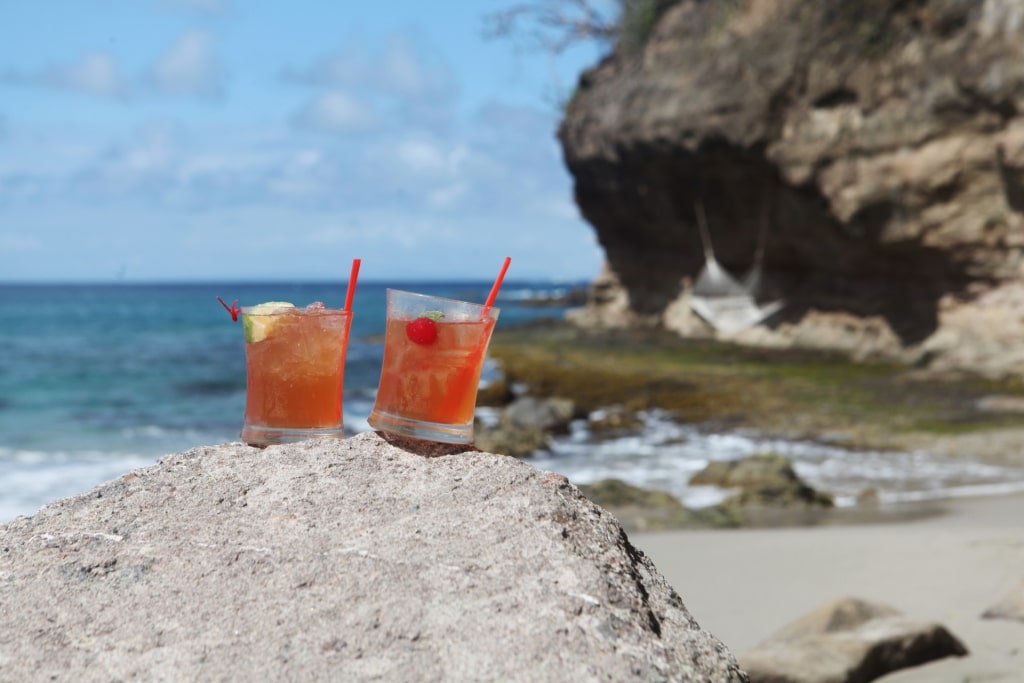
Rum punch
Like many Caribbean Islands, St. Lucia is famous for its rum. Local brands include Chairman’s Reserve and Admiral Rodney, which you might try in a rum punch.
The local lager is Piton Beer, while cocoa tea is a healthy version of hot chocolate. Coconut water or soursop juice are other refreshing options.
The Central Market is a great place to try many of those foods or drinks. In Castries, The Pink Plantation House is noted for its Creole cuisine, while Jammer’s Bar specializes in fish.
Best Time to Visit
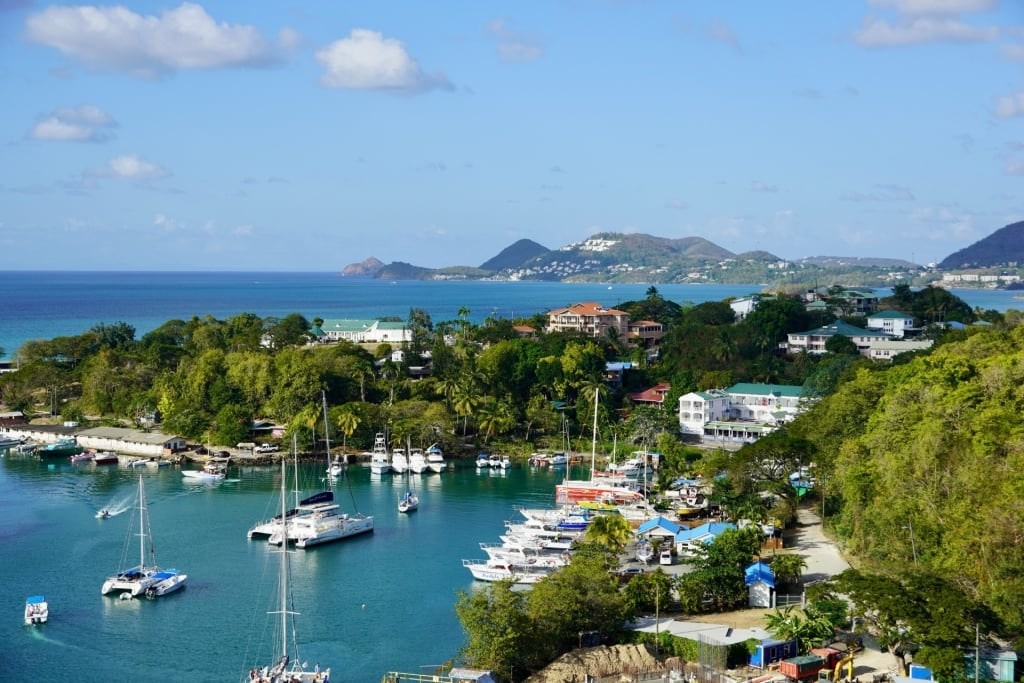
Castries
The best time to visit St. Lucia generally is from mid-December to mid-April. This is the dry season, with low humidity and less rainfall.
At this time of year, temperatures are a pleasant 79°F to 84°F. Any rain showers will most likely be quick and refreshing.
The shoulder season from May through June is also a good time to experience the delights of St. Lucia. Visitor numbers have dropped and the weather remains tropical, but there may be more showers.
The wettest months are from July to November. These months are also officially hurricane season, with September or October being peak months.
No matter the time of year, you can expect average water temperatures in the low 80s. They reach a peak around 84ºF in August when high humidity makes a dip very welcome.
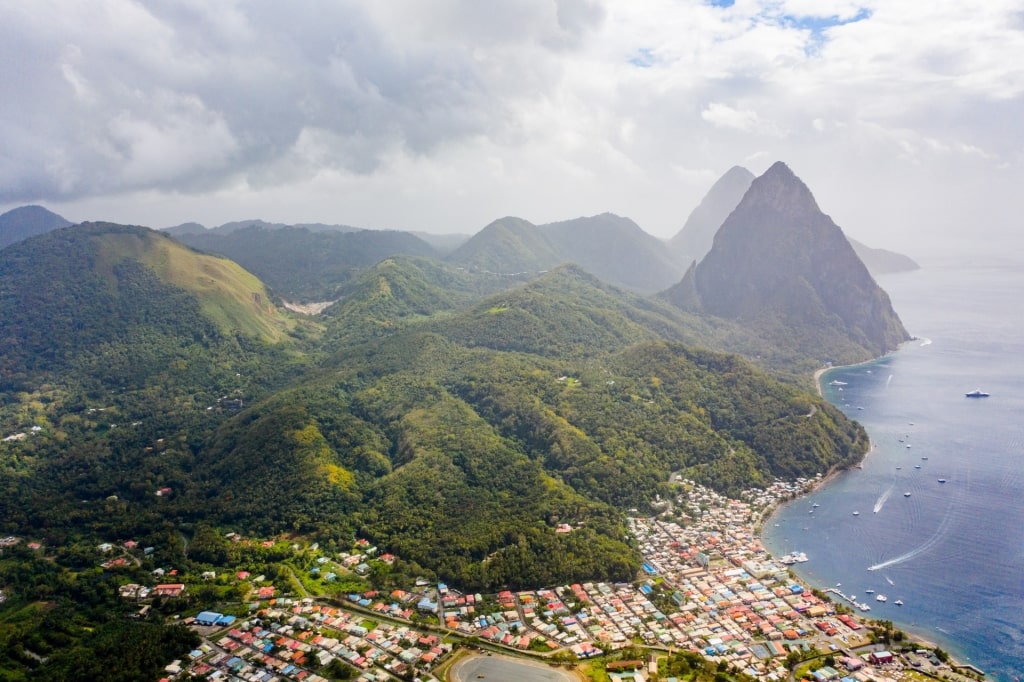
St. Lucia
Are you tempted to explore Castries, St. Lucia for yourself? Then browse our cruises to St. Lucia to find the perfect getaway for you and your loved ones.
